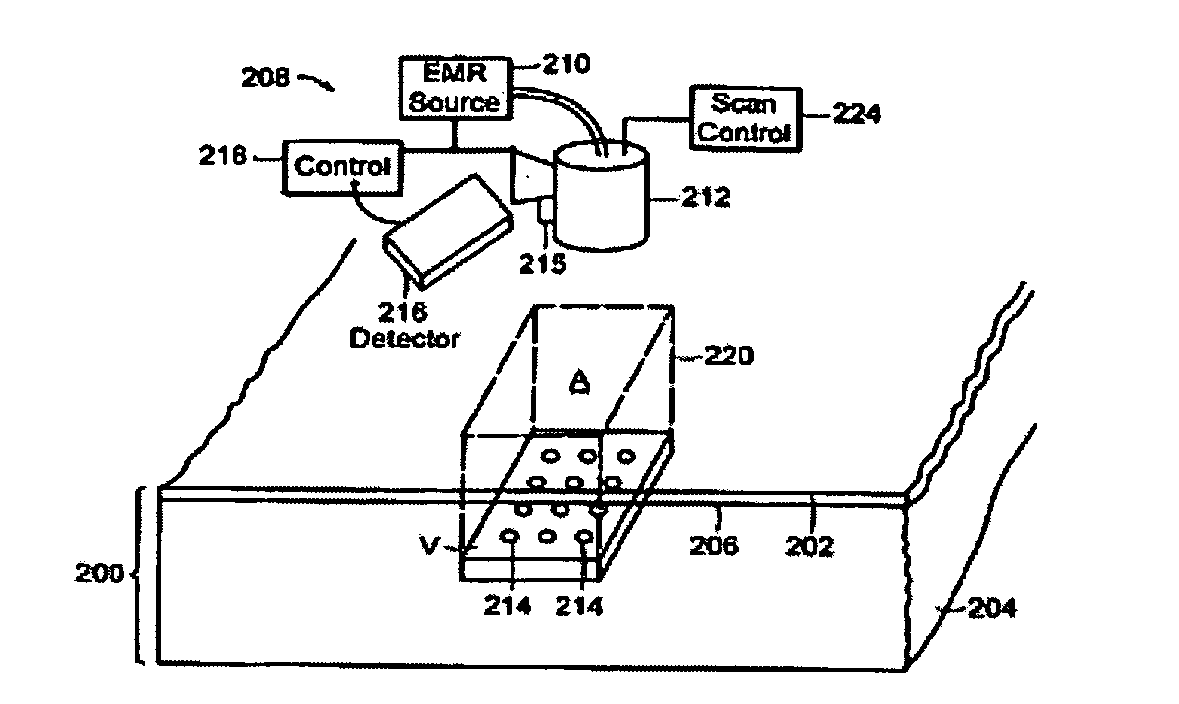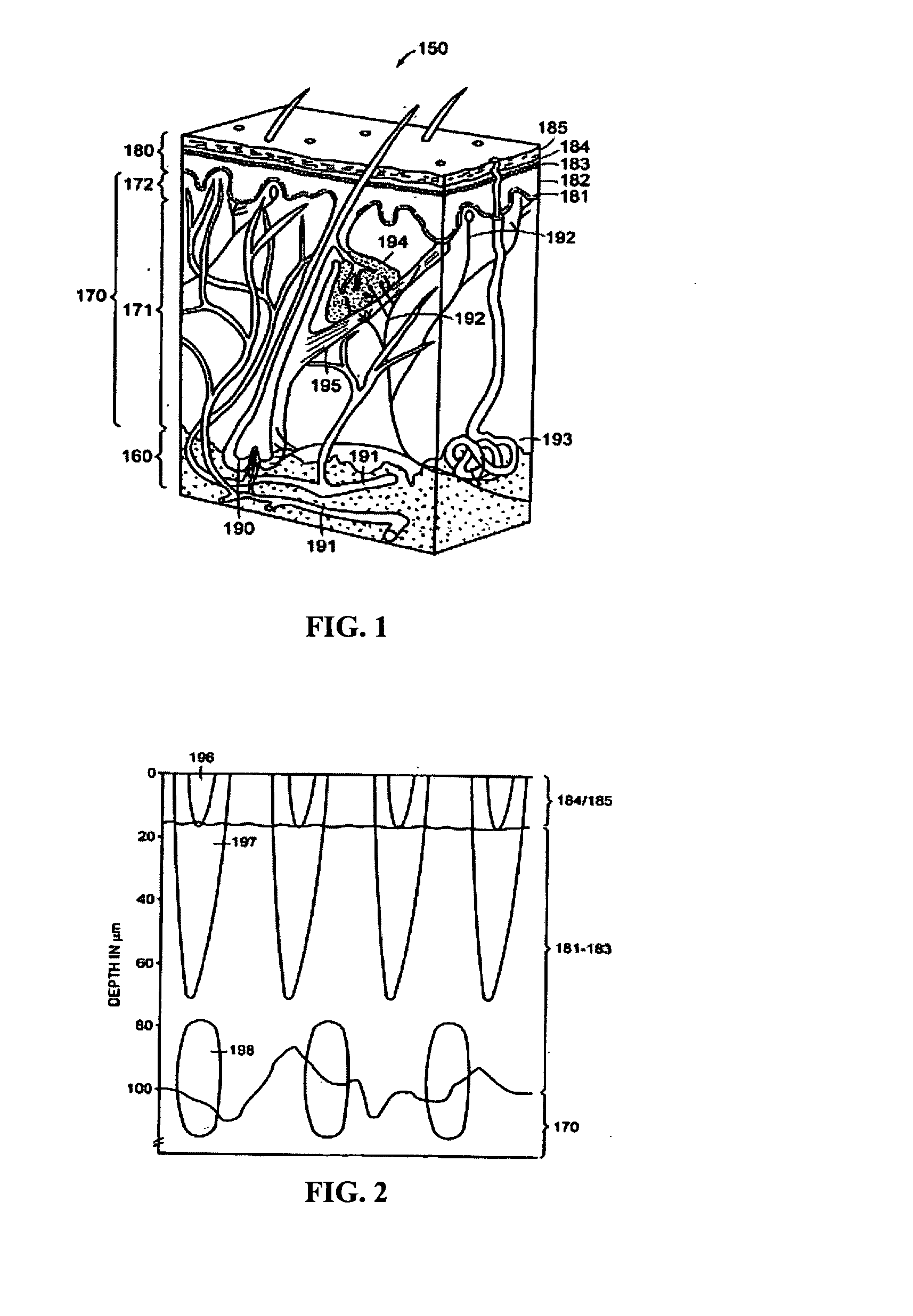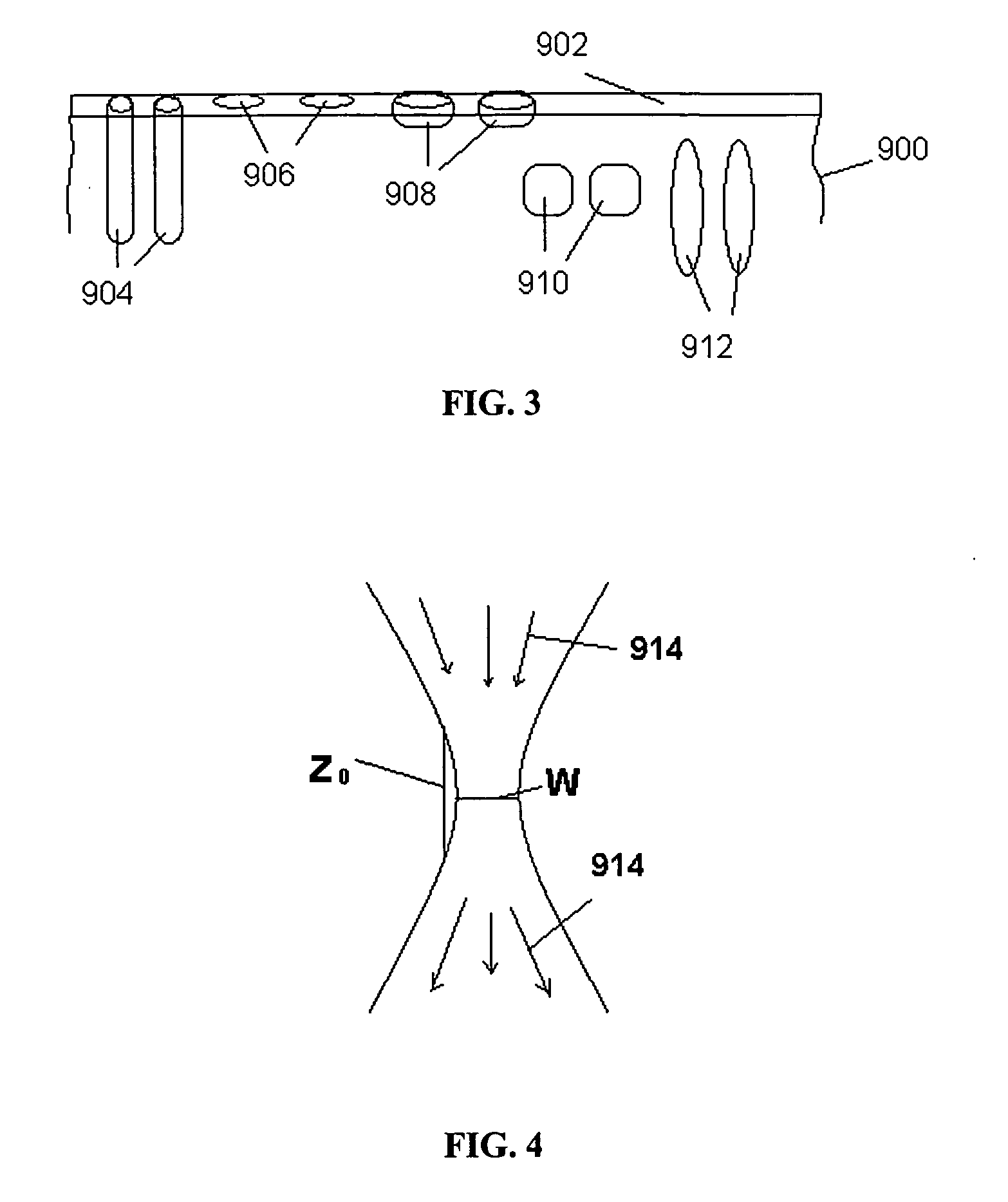Photoselective Islets In Skin And Other Tissues
a tissue and islet technology, applied in the field of tissue treatment, can solve the problems of limiting the ability to selectively target body parts, not being optimal for other purposes, and difficult to eliminate unwanted side effects, so as to improve cosmetic and medical applications, the effect of reducing the risk of bulky tissue damag
- Summary
- Abstract
- Description
- Claims
- Application Information
AI Technical Summary
Benefits of technology
Problems solved by technology
Method used
Image
Examples
Embodiment Construction
I. Types of EMR-Treated Islets
[0044]When using electromagnetic radiation (“EMR”) to treat tissues, there are substantial advantages to producing lattices of EMR-treated islets in the tissue rather than large, continuous regions of EMR-treated tissue. The lattices are periodic patterns of islets in one, two or three dimensions in which the islets correspond to local maxima of EMR-treatment of tissue. The islets are separated from each other by non-treated tissue (or differently- or less-treated tissue). The EMR-treatment results in a lattice of EMR-treated islets which have been exposed to a particular wavelength, wavelength range, waveband, or spectrum of EMR (or combinations thereof) and which is referred to herein as a lattice of treated islets.
[0045]There are many advantages to forming EMR-treated islets, depending on the application. For example, procedures involving EMR-treated islets tend to be more efficacious. The EMR-treated islets may promote faster healing and other respo...
PUM
 Login to View More
Login to View More Abstract
Description
Claims
Application Information
 Login to View More
Login to View More - R&D
- Intellectual Property
- Life Sciences
- Materials
- Tech Scout
- Unparalleled Data Quality
- Higher Quality Content
- 60% Fewer Hallucinations
Browse by: Latest US Patents, China's latest patents, Technical Efficacy Thesaurus, Application Domain, Technology Topic, Popular Technical Reports.
© 2025 PatSnap. All rights reserved.Legal|Privacy policy|Modern Slavery Act Transparency Statement|Sitemap|About US| Contact US: help@patsnap.com



